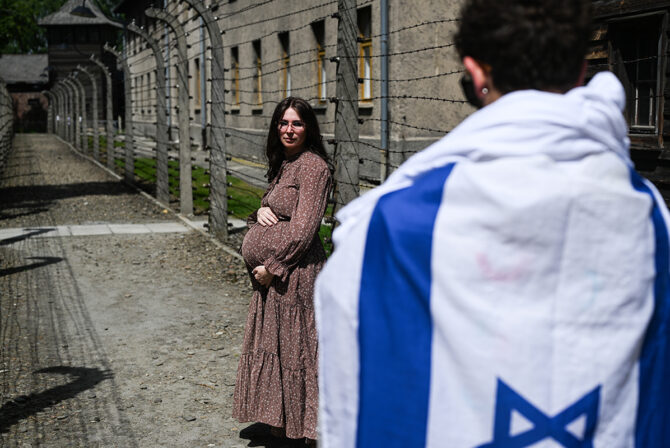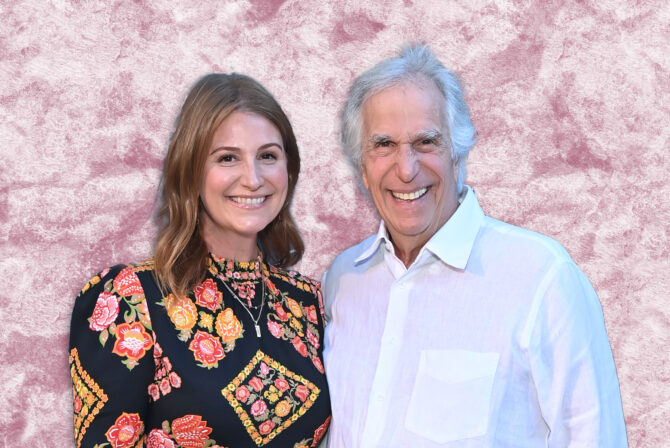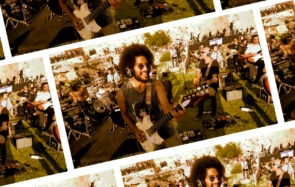Karin Brooke’s post on Kveller about losing her daughter to religious fundamentalism struck a chord with me for a few reasons.
First, I am technically a baal teshuvah–a person who took on Jewish observance later in life. I struggled a lot in college regarding how to introduce my parents (especially my mother, who was raised Orthodox but chose not to be as an adult) to my newfound faith and observance. It was hard. It pains me that Karin’s daughter and she did not find ways to connect positively about her daughter’s transformation. (My own parents eventually, on their own, started lighting Shabbat candles regularly and keeping Passover with more care, which has made it really lovely for my sons to see all of us observing similarly.)
Second, the writer says things about Orthodoxy that might be interpreted as what “all” Orthodox sects practice or believe in. Some of the things she mentions are very far outside of the mainstream Orthodox box, and I think most Orthodox people would find some of the practices she describes her daughter taking on as fringe, and not consistent with standard Orthodox practice.
The post got me thinking about the misperceptions I grew up with about Orthodoxy, many of which were because my mother was raised by Eastern European immigrants and a lot of their “old world” ways she assumed were synonymous with “Orthodoxy” but they weren’t.
For example, my grandparents were very superstitious, but that’s not Orthodoxy, per se. My grandparents also had some very, shall we say, strong feelings about how girls and women should and shouldn’t behave, and deviation from that was not welcomed. Orthodoxy by definition doesn’t have those beliefs; they did. But my mom, since childhood, had assimilated these things into her perception of Orthodoxy in general, which made my taking on observance–as well as her sister’s decision to become even more religious when she got married–difficult for her.
Here are a few things I eventually discovered were quirks rather than norms of Orthodoxy, or simply urban legend. I thank Allison Josephs (my chevrusa [study partner] who I met through Partners in Torah), known online as Jew In The City for contributing to the truths behind these things.
Disclaimer: The answers Allison provides are simply snapshots into very complicated issues in Judaism. Her answers are by no means definitive, but she and I both work hard to try and separate misperceptions from truth about Orthodoxy, and we hope this piques your interest and challenges some of your misperceptions!
MYTH: Orthodox women have to shave their heads at their weddings.
TRUTH: Jewish law requires a married woman to cover her hair, not shave it. (In fact, the Torah, when discussing the “captive woman” in the book of Devarim seems to indicate that head-shaving makes a woman less attractive.) Nevertheless, there is a percentage of Hasidic (non-Lubavitch) woman who do so.
MYTH: Orthodox women can’t be artists or draw pictures of any kind.
TRUTH: I once heard (in the name of Rav Kook–an Orthodox Israeli rabbi) that God left the world “unfinished” when creating it, and that when we make art, we are “partnering” with him in the creation of the world. Women are not excluded! There is a Torah prohibition against making a graven image. Everyone says you can’t make a statue to use for a god. There are some who say you can’t make a statue that looks like a person. There is a very minority opinion which says you can’t draw or paint a picture with a face. There are many Orthodox female artists–even some who have gained acclaim like Elke Reva Sudin. There are also schools and associations which support religious Jewish women who want to make art.
MYTH: Orthodox women aren’t respected by their husbands and are virtual slaves.
TRUTH: The Talmud says that a man is supposed to love his wife as much as himself and honor her more. In the Jewish marriage contract (which is thousands of years old) a man is required to provide his wife with clothing, food, and sexual satisfaction–a unique document historically; no other ancient contract guaranteed such rights for women. There are, of course, lousy men in the Orthodox community, just as there are lousy men in every community. There are unhappy women in the Orthodox community as there are in all communities, but most women I’ve come in contact with (in over 15 years in the Orthodox world) seem to be quite happy. There are also a huge number of Orthodox women who work and the variety of fields they are in is ever-expanding. In fact, there are even some examples in the Hasidic world where men work for their wives!
MYTH: Orthodoxy sees women as lesser in general.
TRUTH: According to the Torah, man and woman were created as one being to show us that men and women are two halves of one whole and that a husband and wife are different (in a yin yang sort of way) and are meant to complete one another. While it’s true that in Orthodoxy women are not obligated to time-bound commandments (meaning those designated as being performed at dawn or dusk, for example), we are told that women have merit which men do not have. The Talmud says that the Jews of Egypt were redeemed because of the righteous women and that the ultimate redemption will come about due to the righteous women. There are areas of Jewish law which seem to be skewed in men’s favor–such as Jewish divorce–but then there are Orthodox Jewish rabbis who have made innovations in Jewish law in order to protect women from such imbalances.
MYTH: You can’t wear any nice clothes when you’re Orthodox because it might be perceived as too sexy.
TRUTH: Basic Jewish law requires women to cover their upper arms, upper legs, and chest (men have their own requirements in modesty to save their eyes only for their wives’ bodies and to dress modestly as well). Different communities have different ideas about how stylish clothes can or can’t be, but you’ll find (as in all communities) women who are more stylish and women who are less stylish. Interesting colors, textures, accessories, and shoes are allowed vis a vis basic law and are implemented by women like these.
MYTH: You can’t be a dancer if you’re Orthodox. Orthodox people don’t let their kids even start dance classes because they will just have to give it up when they hit puberty.
TRUTH: According to Jewish law, for modesty reasons, a woman can’t dance in front of a man who is not her husband (or close blood relative). But there are all female dance troupes which only perform in front of women. There are all women’s zumba and dance classes and many Orthodox Jewish girls go to dance class while they are young and the issue of modesty is not relevant. As with all of these topics, different communities do different things but many things are allowed in terms of basic law or can be done within an all female settling.
Allison and I hope that we have expanded some misperceptions while simultaneously showing how multi-faceted the jewel of observance can be. It’s not always simple to figure out where Orthodoxy and modernity meet, but things are not like they used to be. The world of Orthodoxy is broad and colorful and there is a lot of beauty in it.
Partners in Torah is a free organization that pairs you with a study partner for whatever you are curious about in Judaism. Check it out if you want to learn more!







